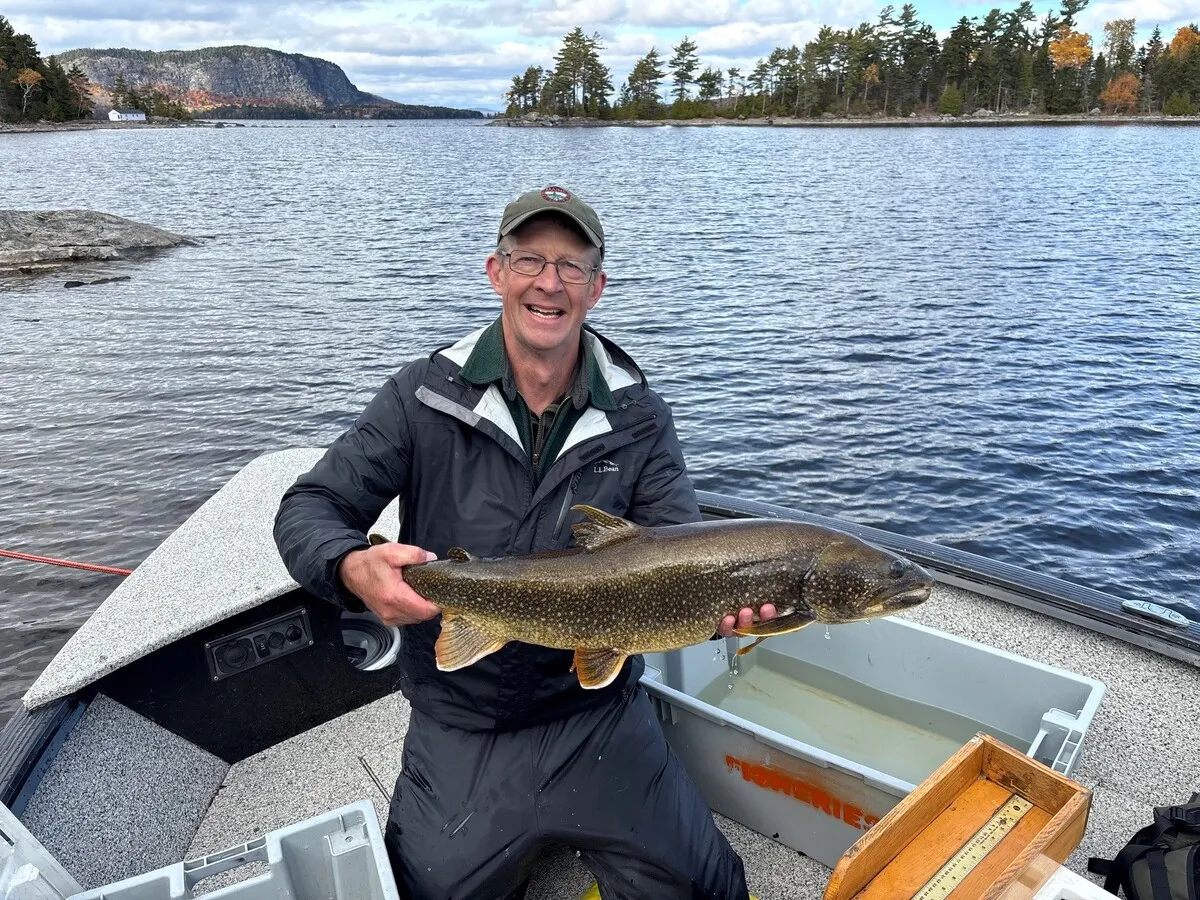Copyright Bangor Daily News

On Monday, fisheries resource biologist Jeff Bagley and Jay Seyfried and Kyle Murphy of Brookfield Renewable on Moosehead Lake ventured out in a “salmon chop” with gray skies and light rain to tend trapnets and tag lake trout for the second year of a research project designed to better understand the species’ population and its impact on the lake’s ecosystem. At the first capture location, strong winds had moved the net, forcing it to be reset, resulting in a catch of only four lake trout. At a second location, the nets were more productive, yielding 21 lake trout. Working from the boat, they recorded each fish’s length, weight and sex. Mature fish 18 inches or longer were fitted with PIT (Passive Integrated Transmitter) tags before release, while smaller fish were measured, weighed and sexed but not tagged. The PIT tags are small internal chips coded with an individual number that allows biologists to identify fish if caught again. The project builds on a pilot study launched in the fall of 2024, when biologists successfully netted and tagged more than 200 mature lake trout, some up to 31 inches long, on a known spawning shoal in the 75,000-acre lake. “We are right around 200 fish tagged so far,” said Tim Obrey, fisheries resource supervisor for the Moosehead Lake Region, referring to this fall’s tagging effort. “The nets have been fishing for 10 days, and hopefully we have another 10 days before pulling the gear out of the water.” Lake trout are native to Moosehead and prized by anglers, but when their numbers rise too high, they can outcompete other coldwater gamefish, particularly salmon and brook trout, for food. “Smelts are the primary source of food for our lake trout and salmon, and it has become abundantly clear that lake trout drive this bus,” Obrey explained. “Time after time, lake trout have demonstrated the ability to greatly reduce the forage base when they are over-abundant.” Understanding lake trout abundance and adjusting management accordingly is key to maintaining the health and balance of the entire fishery. Back in 2008, fishing regulations for lake trout on Moosehead were liberalized to reduce an overabundant population. Within a few years, anglers and biologists saw dramatic improvements in the condition of all coldwater species. This fall’s fieldwork continues and expands that effort. With support from the Natural Resource Education Center at Moosehead and the Moosehead Lake Fisheries Coalition, the department purchased specialized trapnets designed for spawning shoals. Unlike traditional trapnets, these nets are not attached to the shoreline and can be deployed over rocky shoals in six to eight feet of water, where lake trout gather to spawn each fall. Thanks to additional funding this past winter, the department added four nets to two new spawning shoals in 2025, allowing them to operate at three locations and vastly increase the sample size of marked fish. The department hopes to recapture enough tagged fish in winter creel surveys and future netting to estimate the mature lake trout population, which will help evaluate population density and carrying capacity.



